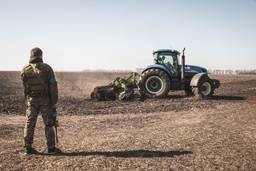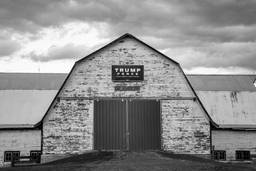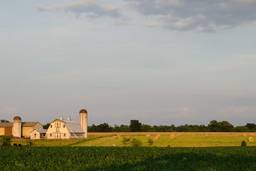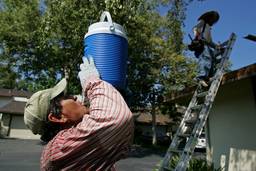Our Food System Is Broken and Biden’s USDA Pick Won’t Fix It
Tom Vilsack showed his pro-corporate colors when he served as Obama’s ag secretary. To build a just food system under his leadership, we will have to push from below.
Jim Goodman
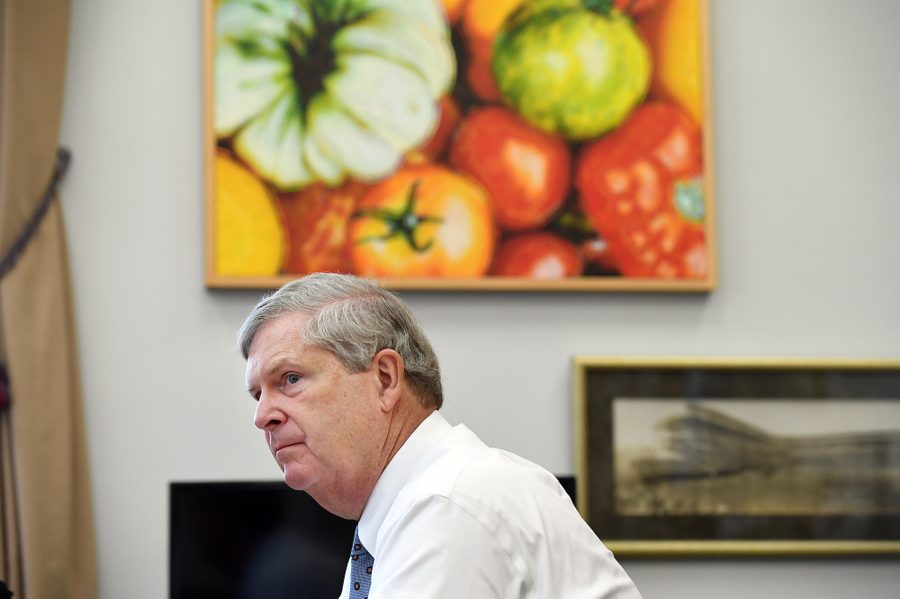
Editor’s Note: This article was originally published by the Wisconsin Examiner.
In 2009 Tom Vilsack was among five of President Obama’s cabinet nominees to be confirmed by unanimous consent of the U.S. Senate. That he was a non-controversial pick for United States Department of Agriculture Secretary (USDA) spoke to the fact that, like his predecessors in previous administrations, his strong ties to corporate agribusiness made him very acceptable to farm-state lawmakers. He was a safe choice then and as President-elect Biden now fills out his cabinet, Vilsack is, again, a safe choice at USDA.
While Vilsack is more than acceptable to Republicans and the centrist wing of the Democratic party, his nomination was a red flag to reformist progressives, small farm and environmental advocates. Vilsack’s nomination means stepping back to the same old same old of Obama’s ag policy that did little to promote progressive policies that would give farmers fair prices, limit corporate consolidation, rebuild rural communities, discourage overuse of pesticides and the proliferation of Confined Animal Feeding Operations (CAFOs) or provide land access to women, people of color and beginning farmers.
No doubt almost anyone moving into the “big office” at USDA would be an improvement over current Ag Secretary Sonny Perdue, with his support for the continuing trend of consolidation in agriculture, his “the big get bigger and the small go out” philosophy, penchant to de-regulate agriculture, disdain for organic farming, perpetuation of racist policies within the USDA, support for factory farming and his feeling that climate science is a “joke.” Not a high bar.
Being the safe choice for the incoming administration hardly equates with Vilsack being the choice of rural Americans. Of course agribusiness corporations and commodity farmers welcome his return to USDA, but the “agriculture in the middle” got little support from Secretary Vilsack.
Under Vilsack, country of origin labeling for beef and pork was repealed. A series of cross-country listening sessions on competition and anti-trust enforcement within the ag industry jointly hosted by USDA and the Department of Justice in 2010 drew thousands of farmers to testify about the unfair prices they were paid in a highly consolidated marketplace. The hearings, it was thought, offered hope. Vilsack listened yet did nothing to foment change.
Under Vilsack’s leadership USDA failed to reverse decades of institutional racism against Black farmers, even as USDA was forced to settle lawsuits for billions of dollars admitting discrimination against African American, Native American, Latinx and women farmers and ranchers. No wonder USDA has been called “the last plantation”.
His imprudent firing of Shirley Sherrod, USDA’s Georgia director of rural development, is still remembered in Georgia and makes one wonder if Georgians see him as a safe choice. Despite pressure from farm, environmental, labor and hunger groups both urban and rural to nominate Ohio Representative Marcia Fudge as USDA Secretary, a position she was well qualified for and actively pursued, she was instead nominated for Secretary of Housing and Urban Development.
Pressure from corporate agribusiness demanded a continuation of the status quo that serves their interests, not that of rural or urban Americans, food chain workers or those who depend on the USDA nutrition programs that Marcia Fudge knows so well. The status quo isn’t working. “We need someone with vision for a just food system,” said Joe Maxwell, president of Family Farm Action. John Boyd, president of the National Black Farmers Association, who campaigned for Mr. Biden and worked with his transition team, said, “I wanted someone new” at USDA.
While in his first go-round at USDA, Vilsack did state that “local and regional food systems are about opportunity,” there seemed to be little effort to make those systemic changes happen. President Obama selected organic advocate Kathleen Merrigan as Deputy Secretary of Agriculture and Vilsack seemed committed to raising the presence of organic agriculture at USDA. Planting the “Peoples Garden” and placing a beehive on the roof of the USDA building in Washington along with Michelle Obama’s organic White House Kitchen Garden and beehive on the South Lawn of the White House gave an indication that perhaps the administration and Vilsack were ready to take the USDA in a new direction. But old habits are hard to break and Vilsack, once named the “Biotech Governor of the Year,” was more inclined to approve bio-tech crops than he was to support organic farmers.
In his position heading the U.S. Dairy Export Council (USDEC) for the past three years, Vilsack found himself in a real conundrum. The cheese he wanted to export is a commodity no one really wants. Last fall, Rogue River Blue was named “Best Cheese in the World.” It is made exclusively with milk from Rogue Creamery’s Certified Organic Dairy Farm, where cows graze on pastures bordering the Rogue River, in Oregon, a far cry from the commodity cheese from CAFO farms that’s piling up in cold storage. Vilsack justly applauded Rouge River. “This is more than a win for Rogue Creamery of Central Point, Oregon,” he said. “The ‘Best Cheese’ title creates a halo effect that will cause global customers to look at all U.S. cheeses in a brighter light.” Really? American cheese singles may sell at the convenience stores, but clearly not on the world market.
As head of USDEC, Vilsack’s answer to the surplus of U.S. dairy production was to demand an open market into Canada, in effect forcing the Canadians to dismantle their widely supported dairy supply management system that has kept their farmers profitable. That troubles many small and medium-sized U.S. dairy farmers who feel implementing supply management here might be their last, best hope to end the wild fluctuations in milk prices which, for decades, have been consistently below the cost of production. Mr. Vilsack’s solution for low farm-gate prices and the growing problem of surplus dairy production — increasing dairy exports — has not worked.
In a September interview, Mr. Vilsack (at the time an adviser to the Biden campaign) said “I don’t think most farmers want government payments,” noting a “need for new policies that support a more resilient farm sector.” Under a Biden administration, he added, “the USDA could set up regional food-supply markets and direct federal incentives to farmers who adopt climate-friendly practices.” Right on!
Let’s give Vilsack credit for embracing that kind of thinking. And let’s lift up the idea of a just food system, feed ourselves, pay our farmers and farm workers fairly and pay everyone else a fair wage — as Bernie Sanders says, “a minimum of 15 bucks an hour.” Let’s admit that forcing over-production of dairy, or any commodity, on the world market is a losing game. If folks like Rogue River and others can export their specialties, more power to ‘em.
Ricardo Salvadore at Union of Concerned Scientists stressed that “any change in administration is an opportunity to strike in a new direction. So, obviously, going back to a [USDA] secretary of the past is not the way to strike in a new direction. That is status quo.”
Given a second chance, will Tom Vilsack be that “someone with vision for a just food system” that Joe Maxwell hoped for, someone who will Build Back Better, or will it be “déjà vu all over again”? The fate of farmers, rural communities and our food system depends on the answer.
Jim Goodman is a retired dairy farmer from Wonewoc, Wisconsin.

